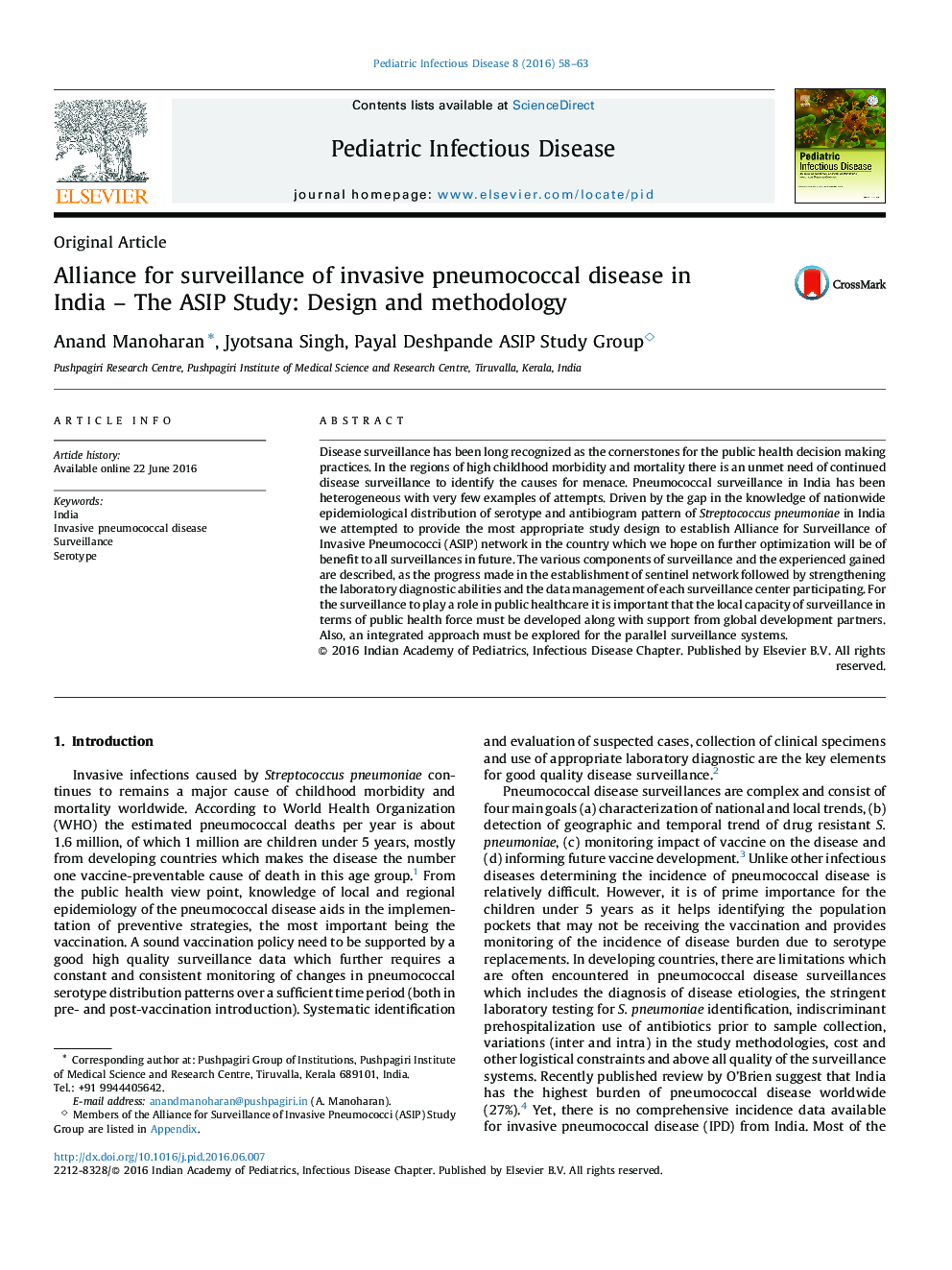| Article ID | Journal | Published Year | Pages | File Type |
|---|---|---|---|---|
| 3382250 | Pediatric Infectious Disease | 2016 | 6 Pages |
Disease surveillance has been long recognized as the cornerstones for the public health decision making practices. In the regions of high childhood morbidity and mortality there is an unmet need of continued disease surveillance to identify the causes for menace. Pneumococcal surveillance in India has been heterogeneous with very few examples of attempts. Driven by the gap in the knowledge of nationwide epidemiological distribution of serotype and antibiogram pattern of Streptococcus pneumoniae in India we attempted to provide the most appropriate study design to establish Alliance for Surveillance of Invasive Pneumococci (ASIP) network in the country which we hope on further optimization will be of benefit to all surveillances in future. The various components of surveillance and the experienced gained are described, as the progress made in the establishment of sentinel network followed by strengthening the laboratory diagnostic abilities and the data management of each surveillance center participating. For the surveillance to play a role in public healthcare it is important that the local capacity of surveillance in terms of public health force must be developed along with support from global development partners. Also, an integrated approach must be explored for the parallel surveillance systems.
